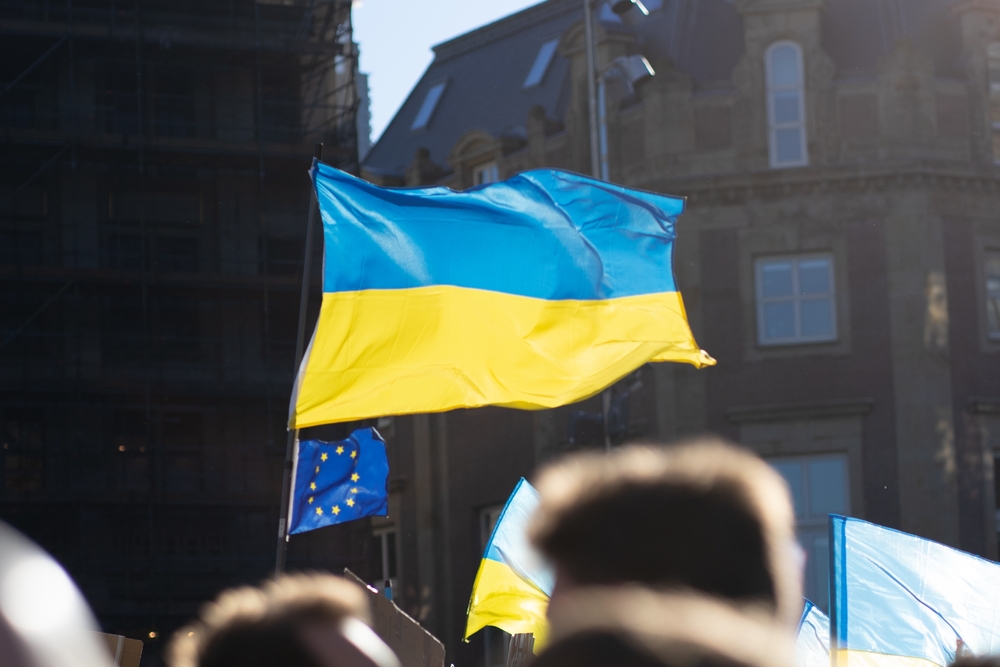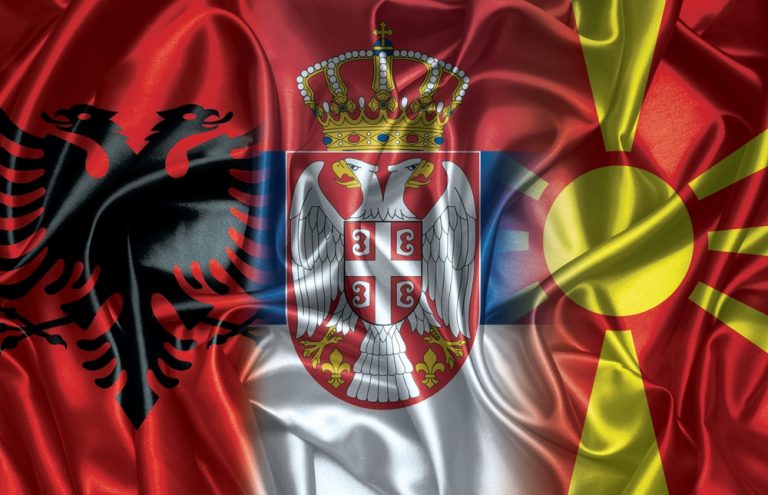
The Ukrainian counteroffensive did not go according to plan
For several months now, Ukraine’s military and political leadership have been preparing a counteroffensive, positioned as a crushing blow to defeat the Russian army and inflict a final defeat on Vladimir Putin. Inside the country, belief in its success is almost limitless, due both to strong patriotic enthusiasm and to the banal military censorship that forces only laudatory and uncritical material to be written about this militant event. However, despite the fact that many military details of the upcoming offensive are an objective secret, there are doubts about its success and stated significance. Its date, which was originally set for the first half of April, has been continuously postponed. Despite the official version, which boils down to spring thaw, on the surface there are objective difficulties for the AFU, caused by a shortage of equipment, ammunition and personnel. An even sadder picture is shown by the European and American media, which, although sympathetic to Ukraine, are not bound by Kiev’s propaganda in their editorial policy. Finally, Volodymyr Zelensky is not optimistic about the assessment of the situation in the leaked Pentagon documents, whose partial objectivity no one doubts anymore. However, it is worth talking about everything in order.
Of the objective military reasons for the prolongation and potential failure of the offensive are the heavy losses among the Ukrainian military that have combat experience. The fighting is already in its second year, and during this time tens of thousands of experienced soldiers and officers have died, who have to be replaced by mobilized civilians who are not ready for war. Another quite utilitarian reason is the slow supply of equipment and ammunition from the U.S. and EU countries. In such a situation, the AFU is experiencing a serious shortage of ammunition and is forced to collect unexploded shells from the Russian army. Ukraine now produces about 7,700 shells per day, while daily inputs do not exceed 5,000, which only exacerbates the crisis. There are fears that Ukraine has nearly exhausted its air defense resources, without which any offensive action is seen as almost impossible. There are also great doubts that the amount of NATO tanks and other weapons already available is not enough for a possible Ukrainian counterattack in spring or summer, and the next deliveries are unlikely to arrive in time for the military operation, and will not reach Kiev until autumn or even winter of next year.

It is important to understand that the counterattack has not only a purely military objective, but also a serious political one. The authorities in Kiev need to prove to their critics in Europe and the U.S. that their continued support makes any sense, even if it does not lead to the defeat of the Russian armed forces. Here Volodymyr Zelensky is fighting not only for his own image, but also to cover for his partners, such as Andrzej Duda in Poland and Joe Biden in the U.S. The head of Ukrainian military intelligence Kyrylo Budanov also said in an interview that “Ukraine needs to demonstrate success in a counterattack otherwise the taxpayers of the countries supplying Kiev will have questions.” European officials now do not believe that Ukraine can make serious headway on the battlefield in 2023. But behind this lies not just disbelief, but also a desire for the failure of the AFU, which will allow Germany and France to escape American pressure to give their military equipment to Kiev for free. Even the much more loyal to Ukraine British Secretary of State for Defence Ben Wallace was modest in his assessments urging to be “realistic” in assessing the fruits of the Ukrainian offensive. But most damning for Zelensky are the negative sentiments in Washington, where the administration of U.S. President Joe Biden is preparing for criticism in the event of a failed counteroffensive by Ukrainian troops. And letting Biden down is tantamount to a disaster for Zelensky.
The president of Ukraine is not optimistic about the opinions of experts in the U.S. Thus, at the end of April military experts in the USA again advised to get rid of “excessive optimism” about the announced counterattack of Ukraine: the Pentagon recommended to use the tactics of “maneuver war” against Russia, but admits difficulties with its implementation. U.S. military strategists are trying to find vulnerabilities in the front line, where Western tanks and Bradley BMPs will be sent. However, the situation is complicated by the fact that Russia’s fortifications are thoroughly mined and Kiev does not have enough minesweepers to break through them. According to the Americans, there is also a shortage of experienced soldiers due to Ukraine’s heavy losses in Bakhmut. Therefore, the new divisions are mostly made up of new recruits, with only a small proportion of experienced front-line soldiers. There are also big problems with coordinating units larger than a platoon of 30 men because Russia manages to effectively jam radio signals, and problems with a shortage of missiles for air defense systems and shells are exacerbated. But officially, Washington continues to bet on the counteroffensive, although unofficially, it worries that if it fails, there will be riots among U.S. allies. After all, the Europeans will no longer be able to supply the same volumes of weapons – and the idea of an armistice with Russia will gain popularity in their ranks.
The media backdrop in the West also remains rather unfavorable for Ukraine, not pleasing official Kiev. For example, there were leaks about how U.S. intelligence banned Kiev from staging strikes deep into Russia on the anniversary of the start of the Ukrainian conflict. Ukrainian special services wanted to bomb the port of Novorossiysk and launch a drone attack on other Russian cities, including Moscow. But this was taken very negatively in Washington for fear that China would retaliate by supplying missiles, artillery, and drones to Russia. The White House is using these leaks as justification for not transferring long-range missiles to Ukraine. Although there is a more trivial reason: there are simply not that many ATACMS missiles in the U.S. stockpile. Over the past 20 years, 4,000 of these missiles have been produced, and more than 600 of them were used up in Iraq and some were sold to America’s allies. Now the U.S. is again complaining about ammunition shortages because of its support for Ukraine, and the Pentagon has admitted that there are no unique weapons that would allow Ukraine to win. This explains the delays in supplying Abrams tanks, although in reality U.S. military strategists simply have no desire to spend all of their ammunition stocks in Ukraine, which they will still need to fight China. Moreover, they want to switch to this front as soon as they manage to achieve a truce with Russia.
Right before Ukraine’s announced counteroffensive, there was renewed talk in the West about the possibility of an autumn truce with Russia. This overlaps with a general concern that Ukraine’s spring-summer campaign may eventually end in a fiasco. Western countries acknowledge that a Ukrainian counteroffensive will result in large-scale losses of both personnel and armored vehicles turned over to Kiev. The Ukrainian army will be exhausted by the end of the summer. At the same time, if the front breaks through, it may face sabotage activity from the residents of Kherson and Zaporizhzhia regions. By this time the U.S. and Europe will have to make a compromise version of negotiations with Russia under pressure from China, India and Brazil. Western analysts are considering the option of a temporary truce and a freezing of the conflict closer to the fall, while acknowledging that it could be years before a peace treaty is concluded. By fall, the current Ukrainian budgets in the U.S. will come to an end, and new tranches will be difficult to negotiate because of the reluctance of many Republicans in Congress to go along with the White House. There will also be problems with the supply of new armored vehicles and ammunition due to the exhaustion of shells, missiles and artillery not only in Europe, but already in the United States. The Biden administration hopes that a counteroffensive will improve the situation on the front so that it can call the outcome of the Ukrainian crisis a victory. Failure of the counteroffensive, however, would be a significant reputational blow for Biden and at the most inconvenient time when he is trying to run for a second term. A loss in Ukraine, combined with economic problems and a divided country, could be fatal for Biden.

Given these political factors, U.S. military experts are urging their leadership to temper expectations ahead of Ukraine’s spring and summer offensive. Washington is increasingly concerned that a shortage of weapons, combined with a delayed start of the operation, is reducing Ukraine’s chances of breaking through the front lines. Kiev is asking for more tanks and missiles, but they are not being delivered until Ukraine shows success on the battlefield. It is a trap of sorts, but the problems with the already supplied weapons are also exacerbated. Ukraine has received several modifications of Leopard tanks from eight countries, and they also differ in the types of shells used, which are in short supply. Here a special role was played by Brazil, which refused to supply 300 thousand shells for the German armored vehicles, though Berlin was ready to pay for them. However, Brazil preferred to remain neutral so as not to lose access to Russian fertilizers and energy. At the same time deliveries of American Abrams tanks, 31 of which the U.S. has promised to Ukraine will not begin until autumn and they will not be used in the counterattack. The supply of Western fighter jets and long-range missiles is also stuck in negotiations. Washington fears that this will become a signal for China, which will then begin to actively supply its weapons to Russia. Military analysts in the U.S. and Europe consider the basic scenario of a counterattack to be an advance of 20-30 kilometers deep into the Zaporozhye region without cutting the land corridor to the Crimea. The White House is still hoping for more, so it is rushing the Ukrainians to advance in every way possible, using this as a backdrop for Biden’s presidential campaign. But the Pentagon considers it more likely that the stalemate on the front will persist, which will make it much more difficult to agree on new Ukrainian budgets when the current tranches come to an end closer to the fall.
Against the backdrop of these negative expectations, Washington has begun to shift responsibility for any failures of the Ukrainian counteroffensive to the Ukrainians. The Pentagon and the White House are making claims to Kiev in advance because Ukraine stopped sharing information with the U.S. after leaks of secret documents containing information about surveillance and Volodymyr Zelensky. For their part, Ukrainian lobbyists justify the delay with the counterattack with bad weather, prolonged muddy weather, and difficulties with the use of capricious Western equipment in these conditions. This applies to the supplied BMP tanks and German howitzer as well. The 60-ton PzH 2000 artillery units simply get bogged down in mud, unlike the lighter and more maneuverable Soviet Pions. In addition, they require greenhouse storage as well as careful maintenance. For example, after a few rounds of firing, artillery operators then have to spend a whole day on maintenance, and the sensitive electronics of the howitzer fail quickly after moisture and dirt. But there is little faith in these excuses, either in Europe or in the United States. Both sides, Washington and Kiev, are trying to find excuses for their audience in advance in case the counterattack fails. This is a good indication that they see this development as more and more likely.


Average Rating